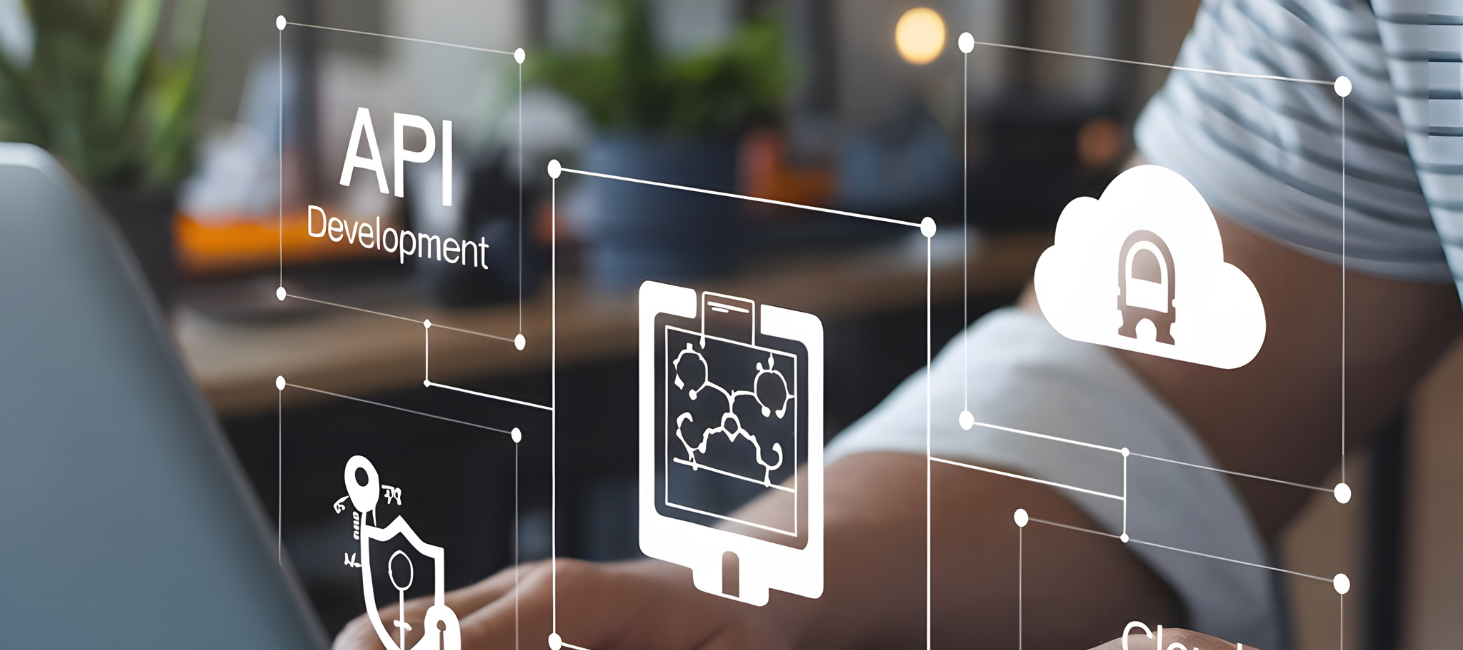API Security in 2025: The Hidden Battlefield of Modern Digital Systems
APIs are the central nervous system of modern-day businesses. They power mobile apps, link enterprise systems, and support complex partner integrations across industries from fintech to travel to healthcare. But in 2025, APIs have also become one of the digital attack surface's most exploited and misunderstood components.
On our latest blog, we unpack what true API security looks like today, the challenges organisations face, and why protecting APIs is no longer a technical afterthought it’s a business-critical imperative.
The Rise of APIs and Their Exposure
Every digital service today relies on APIs, often dozens or even hundreds of them. While microservices architecture, mobile apps, and platform-based models have accelerated innovation, they’ve also massively expanded the attack surface. APIs expose business logic directly to the outside world, and attackers know it.
As organisations rush to meet digital demands, many APIs are built quickly, tested lightly, and left partially documented or completely unmanaged. They often bypass traditional security controls because those tools weren’t built with APIs in mind.
The result?
A perfect storm: public-facing endpoints, sensitive data in motion, and logic that can be abused without triggering a single firewall rule.
API Security is Not Just Development Hygiene
One of the most common misunderstandings in API security is that it’s all about code quality or “developer mistakes.” While good coding practices matter, APIs bring a unique set of risks that can’t be patched by linters or basic input validation alone.
Many API vulnerabilities emerge not from bugs, but from design flaws and logic abuse. For example, an API might function exactly as intended returning user account data when queried but without proper authorisation checks, it becomes a goldmine for data harvesting or account takeover attempts.
Security teams must therefore go far beyond surface-level testing. Protecting APIs means understanding not just how they work, but how they can be misused.

Business Logic Abuse: The Attacker’s Favourite Tool
A growing threat in 2025 is business logic abuse where attackers don't exploit a vulnerability in the code, but instead manipulate the legitimate flow of an API to achieve malicious outcomes.
Consider a booking platform. A user API allows cancellations within 24 hours. But an attacker discovers they can cycle through booking IDs and cancel other users’ reservations without authentication. There's no “exploit” in the traditional sense it’s just broken logic. And traditional tools won’t catch it.
This is why secure API design must account for logic scenarios and abuse paths—not just authentication and encryption.
API Documentation: Your First Line of Defence
Good documentation isn’t just for developers. It’s a security asset. Teams should rely on machine-readable formats like OpenAPI Specification (OAS), enabling automated testing, schema validation, and monitoring.
But documentation can become stale quickly. As APIs evolve, especially in agile environments, mismatches between what’s documented and what’s deployed are inevitable. This “API drift” creates blind spots exposing endpoints that aren’t properly secured, monitored, or even known to the organisation.
In 2025, leading teams invest in runtime discovery tools to auto-generate API inventories and update schema records continuously.
Discovery and Shadow APIs: You Can't Secure What You Don't Know
Many organisations have hundreds of APIs in production but only track a fraction. The rest are “shadow APIs,” created during internal projects, legacy migrations, or partner integrations and then forgotten.
These untracked APIs are especially dangerous. They often lack proper controls, use outdated authentication methods, and sit exposed in lower environments like staging or UAT.
Attackers actively probe these lower environments, knowing they’re frequently internet-facing and poorly monitored. This is why full-environment visibility from dev to prod is no longer optional.

Security Testing Is Essential—But Insufficient
Static and dynamic testing still have a role to play. Scanning APIs during the CI/CD pipeline can catch low-hanging fruit like misconfigurations or known vulnerable components.
But these tools struggle with APIs. Static analysis tools often drown teams in false positives. DAST scanners usually fail to exercise API endpoints in the right order or with realistic payloads.
More advanced techniques like fuzzing and schema-based testing are growing in popularity, but they require configuration expertise. Even then, they often can’t account for business logic flaws or behavioural anomalies.
The takeaway? Testing should be part of your API security strategy—but not the cornerstone.
Runtime Monitoring: The Real-Time Defence
The most effective API security in 2025 comes from runtime protection. This means constantly monitoring live traffic, analysing user behaviour, and identifying anomalies in how APIs are being used.
If a login endpoint suddenly sees 1,000 attempts from a single IP, that’s suspicious. If an API designed for account updates is suddenly queried in a loop for account data, it’s likely under abuse.
But unlike traditional WAFs or IPS tools, modern runtime protection must understand the context of each API call. That requires behaviour analysis, not just pattern matching. Machine learning models tuned to your API traffic are now the baseline for spotting these sophisticated threats.
Logging and Monitoring: Signals, Not Noise
Security teams in 2025 face a different kind of threat: data fatigue. With millions of API transactions per day, it’s easy to drown in logs and alerts. What matters isn’t just logging everything it’s extracting meaning from the data.
Logs should be structured, tagged, and integrated with incident response tools. But they must also be filtered for relevance. Instead of flooding a SIEM with every API call, intelligent filtering should surface only those patterns that deviate from established baselines.
This helps avoid SOC burnout and ensures real-time actions are taken where it counts.
Authentication & Authorisation: The Fundamentals Still Matter
APIs in 2025 must continuously authenticate and authorise. Sessions aren’t static; they’re ephemeral. Devices switch, IPs rotate, and credentials get compromised.
Traditional methods like API keys or basic auth are no longer sufficient. Instead, teams must rely on strong token-based protocols like OAuth2 and OpenID Connect, paired with short-lived tokens, session binding, and re-authentication prompts based on behavioural risk.
Machine identities used in M2M API communication also need proper key rotation, mTLS, and certificate-based authentication.
Treat every API consumer as untrusted until proven otherwise. Then, keep verifying.
Front-End Myths: Protect the Back-End First
While client-side protections like certificate pinning and code obfuscation have their place, they’re often bypassed by attackers. Mobile apps can be decompiled, browser scripts inspected, and local storage tampered with.
Real API security comes from protecting the server-side logic. Make sure your APIs don’t rely on client-side filtering or validation. Never trust the device.
In practical terms, this means returning only the data a client should actually see—not everything and relying on the app to hide it. That’s how data leaks happen.

Data Security: Beyond Encryption
API Mediation: Gateways Are More Than Just Proxies
Encryption in transit (TLS 1.3 or at least 1.2) is table stakes in 2025. But encryption alone doesn’t stop API abuse. Most attackers today don’t intercept encrypted traffic—they simply exploit logic flaws and access data with valid credentials or stolen tokens.
Therefore, data exposure risks are best mitigated by minimising what’s sent to the client in the first place. If your API returns entire records and expects the front-end to filter, you're at risk.
Think like an attacker: what could be done with the response payload? Then limit and mask accordingly.
API gateways are essential not just for traffic routing but for access control, telemetry, and threat protection. They act as policy enforcement points and can log, throttle, and block malicious requests before they hit your application.
But gateways must be configured properly and that’s where many teams fall short. Static rules and one-size-fits-all filters won’t cut it.
Modern gateways must integrate with identity providers, support dynamic access control policies, and feed traffic data into central monitoring systems. They’re not just middleware they’re the first line of defence.
Rate Limiting and DoS: Good, But Not Enough
Rate limiting helps prevent abuse but it must be dynamic. Static thresholds are too blunt. They either block legitimate users or allow slow-burn attacks to continue undetected.
Attackers in 2025 know how to fly under the radar using rotating IPs, distributed botnets, and session spoofing. Rate limits must be informed by real user behaviour and anomaly detection engines. Otherwise, they provide a false sense of security.
SecOps and Incident Response: API-Specific Playbooks Needed
Too often, APIs are treated as just another service to monitor. But they have unique attack patterns, dependencies, and data flows. That means they need bespoke incident response plans.
A generic DoS playbook won’t cut it when a partner API is leaking data through broken logic. Security teams need to understand how APIs work, how they’re chained together, and what systems depend on them.
In mature teams, API logs are enriched, scored, and surfaced to the right personas developers, infra engineers, or SOC analysts without overwhelming everyone with noise.
Closing Thoughts: Where to Focus Now
API security is a vast, evolving discipline. No team can tackle everything at once. But in 2025, a clear shift is underway—from checklist security to contextual, behaviour-based protection.
Start where you can:
- Monitor all environments, not just production.
- Prioritise runtime visibility and behaviour analytics.
- Align your security testing with real-world usage, not just code linting.
- Challenge every assumption: what data is exposed, what’s documented, and who has access.
Ultimately, API security is not just about protecting code. It’s about protecting your business logic, your users, and your reputation.
Ready to stop treating API security as an afterthought?
Discover how Cybergen Security helps you gain full visibility, detect business logic abuse, and defend your APIs where it matters most at runtime.
Learn how Cybergen secures your APIs. Contact us today.








